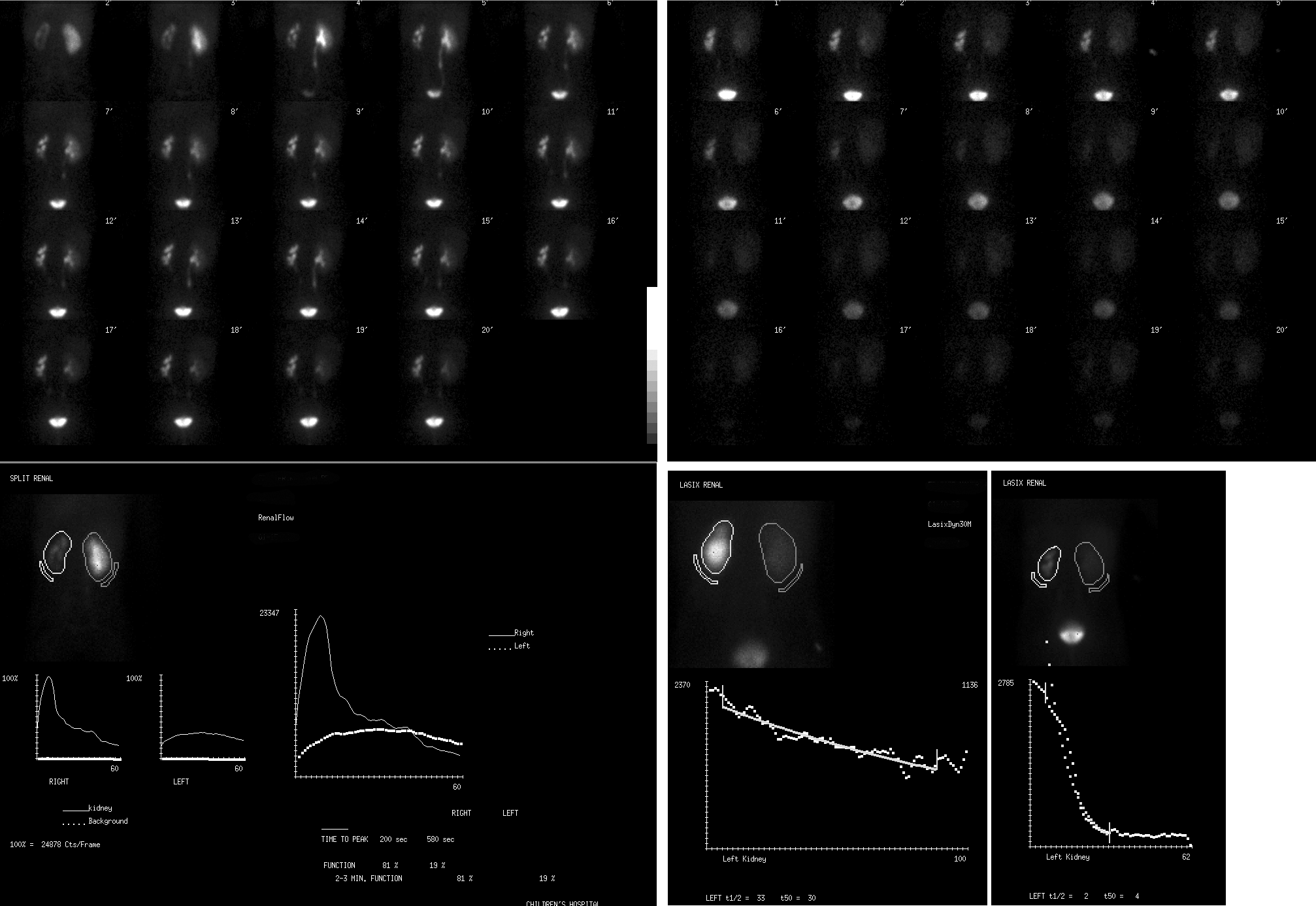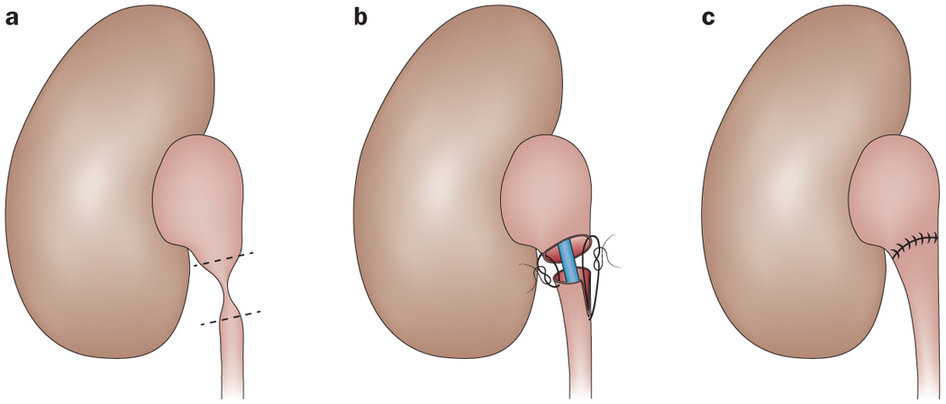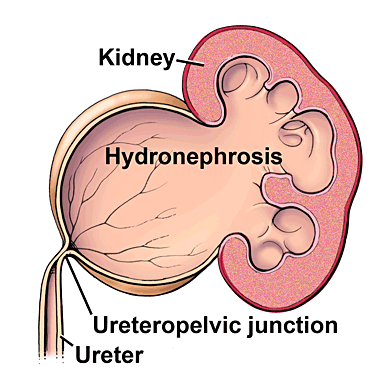Pelvi-ureteric junction obstruction (PUJO)
Urine produced by the kidney is transiently stored in the renal pelvis before travelling down the ureter towards the bladder. In some people the junction between the renal pelvis and ureter is abnormal in apperance and function, as such the urine does not drain out of the kidney in the normal way. This is called a PUJ obstruction.
Symptoms
People with PUJ obstruction can experience pain in their back or side particularly after they have drunk alcohol or a lot of fluid. They can also experience urinary tract infection and blood in their urine. Some patients with PUJ obstruction have no symptoms and are diagnosed by chance following a an ultrasound, CT or MRI scan.
Investigations
Patients with a suspected PUJ obstruction undergo a special nuclear medicine scan called a MAG3 renogram. If this scan confirms a PUJ obstruction, treatment is determined by depending on the function of the obstructed kidney.

Treatment
Pyeloplasty

When a kidney has good function a laparoscopic or robotic assisted pyeloplasty can be performed. This minimally invasive operation opens up and reconstructs the pelvi-ureter junction (PUJ) and in doing allows the kidney to drain freely.
Endopyelotomy
Patients not suitable for a pyeloplasty can be managed with a ureteroscopic laser endopyelotomy. This involves using a laser beam to divide and open up an obstructed PUJ from inside




